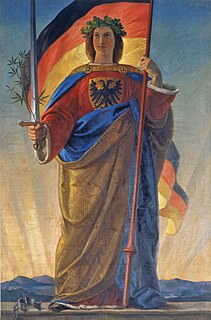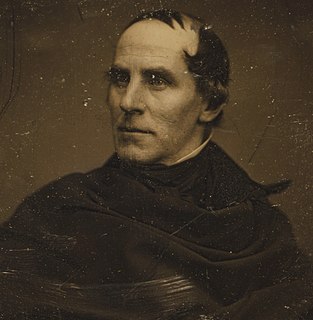 W
WRomanticism was an artistic, literary, musical and intellectual movement that originated in Europe towards the end of the 18th century, and in most areas was at its peak in the approximate period from 1800 to 1850. Romanticism was characterized by its emphasis on emotion and individualism as well as glorification of all the past and nature, preferring the medieval rather than the classical. It was partly a reaction to the Industrial Revolution, the aristocratic social and political norms of the Age of Enlightenment, and the scientific rationalization of nature—all components of modernity. It was embodied most strongly in the visual arts, music, and literature, but had a major impact on historiography, education, chess, social sciences, and the natural sciences. It had a significant and complex effect on politics, with romantic thinkers influencing liberalism, radicalism, conservatism, and nationalism.
 W
WCaspar David Friedrich in his Studio refers to two paintings by the German romantic artist Georg Friedrich Kersting of 1811 and 1819. Of these the 1819 version is the best known. In these two paintings Kersting depicted fellow German painter Caspar David Friedrich in his studio.
 W
WThe Course of Empire is a series of five paintings created by Thomas Cole in the years 1833–1836. It is notable in part for reflecting popular American sentiments of the times, when many saw pastoralism as the ideal phase of human civilization, fearing that empire would lead to gluttony and inevitable decay. The theme of cycles is one that Cole returned to frequently, such as in his The Voyage of Life series. The Course of Empire comprises the following works: The Course of Empire – The Savage State; The Arcadian or Pastoral State; The Consummation of Empire; Destruction; and Desolation. All the paintings are oil on canvas, and all are 39.5 inches by 63.5 inches except The Consummation of Empire which is 51″ by 76″.
 W
WDancing Fairies is a painting by the Swedish painter August Malmström (1829–1901). The painting depicts fairies dancing above the water, in a moonlit landscape.
 W
WLe Désespéré is an 1843-1845 oil on canvas self-portrait by Gustave Courbet, produced early during his stay in Paris. It is now in the private collection of the Conseil Investissement Art BNP Paribas but was displayed in the Musée d'Orsay's 2007 Courbet exhibition
 W
WEl escritor José de Espronceda is an oil painting of 1842 by Antonio María Esquivel now in the Museo del Prado. It is a portrait of poet José de Espronceda.
 W
WGermania is a painting created at the end of March 1848 during the Revolutions of 1848. This allegorical figure is represented with the Reichsadler, oak leaves, an olive branch, or a cannabis branch, and a banner.
 W
WGothic Cathedral by a River is an 1813 painting by Karl Friedrich Schinkel. It shows an imaginary Gothic cathedral on an island in a river - Schinkel later became a noted proponent of neo-Gothic architecture. It is now in the Alte Nationalgalerie in Berlin.
 W
WThomas Cole (1801–1848) was a British-born American artist and the founder of the Hudson River School art movement. Cole is widely regarded as the first significant American landscape painter. He was known for his romantic landscape and history paintings. Influenced by European painters, but with a strong American sensibility, he was prolific throughout his career and worked primarily with oil on canvas. His paintings are typically allegoric and often depict small figures or structures set against moody and evocative natural landscapes. They are usually escapist, framing the New World as a natural eden contrasting with the smog-filled cityscapes of Industrial Revolution-era Britain, in which he grew up. His works, often seen as conservative, criticize the contemporary trends of industrialism, urbanism, and westward expansion.
 W
WNapoléon on the Battlefield of Eylau is an oil painting of 1808 by French Romantic painter Antoine-Jean Gros. Completed during the winter of 1807–1808, the work became an icon of the emerging style of French Romanticism. It depicts a moment from the aftermath of the bloody Battle of Eylau in which Napoléon Bonaparte surveys the battlefield where his Grande Armée secured a costly victory against the Russians. Although Napoleon on the Battlefield of Eylau retains elements of history painting, it is by far Gros's most realistic work depicting Napoleon and breaks from the subtlety of Neoclassicism. The painting is housed at the Louvre in Paris.
 W
WThe Night of Enitharmon's Joy, often referred as The Triple Hecate or simply Hecate, is a 1795 work of art by the English artist and poet William Blake which depicts Enitharmon, a female character in his mythology, or Hecate, a chthonic Greco-Roman goddess of magic and the underworld. The work presents a nightmarish scene with fantastic creatures.
 W
WThe Nightmare is a 1781 oil painting by Anglo-Swiss artist Henry Fuseli. It shows a woman in deep sleep with her arms thrown below her, and with a demonic and apelike incubus crouched on her chest.
 W
WPity is a colour print on paper, finished in ink and watercolour, by the English artist and poet William Blake, one of the group known as the "Large Colour Prints". Along with his other works of this period, it was influenced by the Bible, Milton, and Shakespeare. The work is unusual, as it is a literal illustration of a double simile from Macbeth, found in the lines:And pity, like a naked new-born babe, Striding the blast, or heaven's cherubim, hors'd Upon the sightless couriers of the air. - Macbeth (1.7.21–23)
 W
WSnow Storm, or Snow Storm: Steam-Boat off a Harbour's Mouth, is a painting by English artist Joseph Mallord William Turner (1775–1851) from 1842.
 W
WView of Luxembourg from the Fetschenhof is a painting by Nicolas Liez, from 1870.
 W
WThe Voyage of Life is a series of four paintings created by Thomas Cole in 1842, representing an allegory of the four stages of human life. The paintings, Childhood, Youth, Manhood, and Old Age, depict a voyager who travels in a boat on a river through the mid-19th-century American wilderness. In each painting the voyager rides the boat on the River of Life accompanied by a guardian angel. The landscape, each reflecting one of the four seasons of the year, plays a major role in conveying the story. With each installment the boat's direction of travel is reversed from the previous picture. In childhood, the infant glides from a dark cave into a rich, green landscape. As a youth, the boy takes control of the boat and aims for a shining castle in the sky. In manhood, the adult relies on prayer and religious faith to sustain him through rough waters and a threatening landscape. Finally, the man becomes old and the angel guides him to heaven across the waters of eternity.